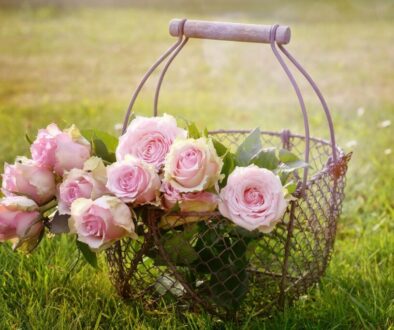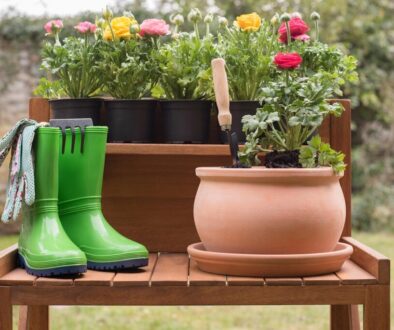How to Deadhead Flowers for Continuous Blooms: A Gardener’s Secret to Endless Color
Deadheading flowers might sound like a rockstar move, but it’s actually a simple gardening trick to keep your blooms vibrant. By removing spent flowers, you encourage plants to produce more blossoms instead of wasting energy on seeds. Think of it as giving your garden a little pep talk to keep going. Ready to learn how to deadhead like a pro? Let’s dive in!
Why Deadheading is Your Garden’s Best Friend
Deadheading is like hitting the refresh button for your flowers. When you remove faded blooms, you signal the plant to focus on new growth. This not only keeps your garden looking tidy but also extends the blooming season. Imagine your marigolds or petunias putting on a non-stop show all summer long! Plus, it’s a great way to connect with your plants and spot any issues early, like pests or diseases.
The best part? Deadheading is super easy and doesn’t require fancy tools. All you need are your hands, a pair of sharp scissors or pruners, and a little patience. Whether you’re a seasoned gardener or a newbie, this technique will make your garden the envy of the neighborhood.
Step-by-Step Guide to Deadheading Like a Pro
- Identify Spent Blooms: Look for flowers that are wilting, turning brown, or losing petals. These are the ones ready to be removed.
- Pinch or Cut: For smaller plants like pansies or geraniums, simply pinch the faded flower off with your fingers. For tougher stems, use clean scissors or pruners.
- Cut at the Right Spot: Make your cut just above the first set of healthy leaves or a new bud. This encourages the plant to branch out and produce more flowers.
- Clean Up: Collect the removed blooms and toss them in your compost bin. This keeps your garden neat and prevents disease spread.
Remember, not all plants need deadheading. Some, like impatiens or begonias, drop their spent flowers naturally. A quick online search or a peek at plant tags will tell you if your flowers are good candidates.
Deadheading Tips for Different Types of Flowers
Not all flowers are created equal, and neither is the way you deadhead them. Here’s a quick guide to handling some popular blooms:
- Roses: Snip just above a five-leaflet leaf to encourage new growth.
- Dahlias: Cut the stem back to the main branch to promote more blooms.
- Lavender: Trim the entire flower spike once it fades to maintain its shape.
- Zinnias: Remove spent flowers to prevent them from going to seed too quickly.
Each plant has its quirks, so take a moment to learn what works best for your garden favorites.
Common Deadheading Mistakes to Avoid
Even the most experienced gardeners can slip up when deadheading. Here are some pitfalls to watch out for:
- Cutting Too Low: Removing too much of the stem can stress the plant. Always cut just above a leaf node or bud.
- Deadheading Too Late: If you wait too long, the plant may start producing seeds, reducing its energy for new blooms.
- Using Dull Tools: Blunt scissors or pruners can damage stems. Keep your tools sharp and clean for precise cuts.
By avoiding these mistakes, you’ll keep your plants happy and blooming all season long.
The Benefits of Deadheading Beyond Blooms
Deadheading isn’t just about pretty flowers; it’s also a great way to keep your garden healthy. Removing spent blooms prevents diseases and pests from taking hold. It also improves air circulation around your plants, reducing the risk of mold or mildew.
Plus, it’s a fantastic stress reliever. There’s something incredibly satisfying about snipping away faded flowers and watching new ones take their place. It’s like giving your garden a fresh start every time you deadhead.
When to Stop Deadheading
While deadheading is great for continuous blooms, there comes a time to let nature take its course. As summer winds down, consider leaving some spent flowers on the plant. This allows them to produce seeds, which can attract birds or self-sow for next year’s garden.
For perennial plants, stopping deadheading in late summer gives them time to prepare for winter dormancy. It’s all about finding the right balance between encouraging blooms and supporting the plant’s natural cycle.
Tools You’ll Need for Deadheading Success
You don’t need a lot of gear to deadhead effectively, but having the right tools makes the job easier. Here’s what you’ll want:
- Pruners: Ideal for thick stems and woody plants.
- Scissors: Perfect for delicate flowers and precise cuts.
- Gloves: Protect your hands from thorns and rough stems.
- Compost Bin: A handy spot to toss your spent blooms.
Investing in quality tools will save you time and effort, making deadheading a breeze.
Deadheading for a Stunning Container Garden
If you’re growing flowers in pots or containers, deadheading is even more important. Container plants have limited space and resources, so they need a little extra TLC. Regularly removing spent blooms ensures they stay vibrant and healthy.
Plus, deadheading keeps your containers looking polished and professional. Whether you’re sprucing up your patio or adding color to a balcony, this simple step makes a big difference.
Final Thoughts: Deadheading for a Happier Garden
Deadheading is one of the easiest ways to keep your garden blooming beautifully all season long. It’s a simple task with big rewards, from more flowers to healthier plants. Plus, it’s a great excuse to spend time outdoors and connect with nature.
So grab your pruners, head to the garden, and start deadheading. Your flowers will thank you with a dazzling display of color, and you’ll enjoy the satisfaction of a job well done. Happy gardening!
By following these tips and tricks, you’ll master the art of deadheading and keep your garden in peak condition. Whether you’re tending to roses, dahlias, or petunias, this technique is your secret weapon for continuous blooms. Now go out there and make your garden the star of the season!
How Deadheading Boosts Your Garden’s Aesthetic Appeal
A well-maintained garden is a sight to behold, and deadheading plays a crucial role in achieving that picture-perfect look. When you remove spent blooms, your garden instantly looks cleaner and more vibrant. It’s like giving your outdoor space a mini makeover every time you deadhead.
This practice also allows you to shape your plants and control their growth. For instance, if you want your roses to grow bushier, deadheading encourages lateral growth. If you prefer taller plants, you can guide their growth by cutting back strategically.
Deadheading for Pollinators: A Win-Win Situation
While deadheading encourages more blooms, it’s also beneficial for pollinators like bees and butterflies. Fresh flowers mean more nectar and pollen, which are essential for these helpful creatures. By deadheading, you’re not just beautifying your garden; you’re also supporting the local ecosystem.
However, remember to leave some flowers to go to seed if you want to attract birds or allow self-seeding plants to propagate. It’s all about finding the right balance for your garden’s needs.
Deadheading in Different Seasons: What to Expect
Deadheading isn’t just a summer activity. Depending on your climate and the types of plants you have, you might need to deadhead in spring, summer, or even early fall.
- Spring: Early bloomers like pansies and daffodils benefit from deadheading to extend their flowering period.
- Summer: This is peak deadheading season for most annuals and perennials.
- Fall: As the growing season winds down, reduce deadheading to allow plants to prepare for winter.
Understanding your plants’ life cycles will help you time your deadheading efforts for maximum impact.
Deadheading as a Mindful Gardening Practice
Deadheading isn’t just good for your plants; it’s good for you too. The repetitive, mindful nature of the task can be incredibly calming. It’s a chance to slow down, breathe in the fresh air, and appreciate the beauty of your garden.
Plus, it’s a great way to get up close and personal with your plants. You’ll notice new growth, spot potential problems early, and feel more connected to your garden.
Creative Uses for Deadheaded Blooms
Don’t toss those spent flowers in the trash! Deadheaded blooms can be repurposed in creative ways:
- Compost: Add them to your compost pile to enrich your soil.
- Crafts: Use dried petals for potpourri or DIY projects.
- Mulch: Spread them around your garden as a natural mulch.
By finding new uses for deadheaded blooms, you’re reducing waste and making the most of your garden’s resources.
Deadheading Myths Debunked
There are a few misconceptions about deadheading that might be holding you back. Let’s set the record straight:
- Myth 1: Deadheading is only for experienced gardeners.
- Truth: It’s a simple technique anyone can master with a little practice.
- Myth 2: Deadheading harms plants.
- Truth: When done correctly, it promotes healthier, more vigorous growth.
- Myth 3: All plants need deadheading.
- Truth: Some plants, like impatiens, don’t require it. Always check your plant’s specific needs.
By understanding the facts, you can deadhead with confidence and enjoy the benefits.
How to Teach Kids the Art of Deadheading
Gardening is a fantastic activity for kids, and deadheading is a great way to get them involved. Teach them how to identify spent blooms and make clean cuts. It’s a fun, hands-on way to learn about plant life cycles and the importance of caring for living things.
Plus, it’s a great bonding activity. Spend an afternoon in the garden together, and you’ll create lasting memories while keeping your flowers in top shape.
Deadheading for a Sustainable Garden
Deadheading is an eco-friendly gardening practice. By encouraging more blooms, you reduce the need for chemical fertilizers and pesticides. It’s a natural way to keep your garden thriving while minimizing your environmental impact.
Additionally, by composting your spent blooms, you’re recycling nutrients back into the soil. It’s a small step that makes a big difference in creating a sustainable garden.
Conclusion: Embrace the Joy of Deadheading
Deadheading is more than just a gardening chore; it’s a rewarding practice that brings beauty, health, and joy to your garden. With a little time and effort, you can enjoy continuous blooms, support pollinators, and create a stunning outdoor space.
So, grab your tools, head outside, and start deadheading. Your garden will thank you with a dazzling display of color, and you’ll discover the simple pleasure of nurturing nature.
Happy Gardening!







